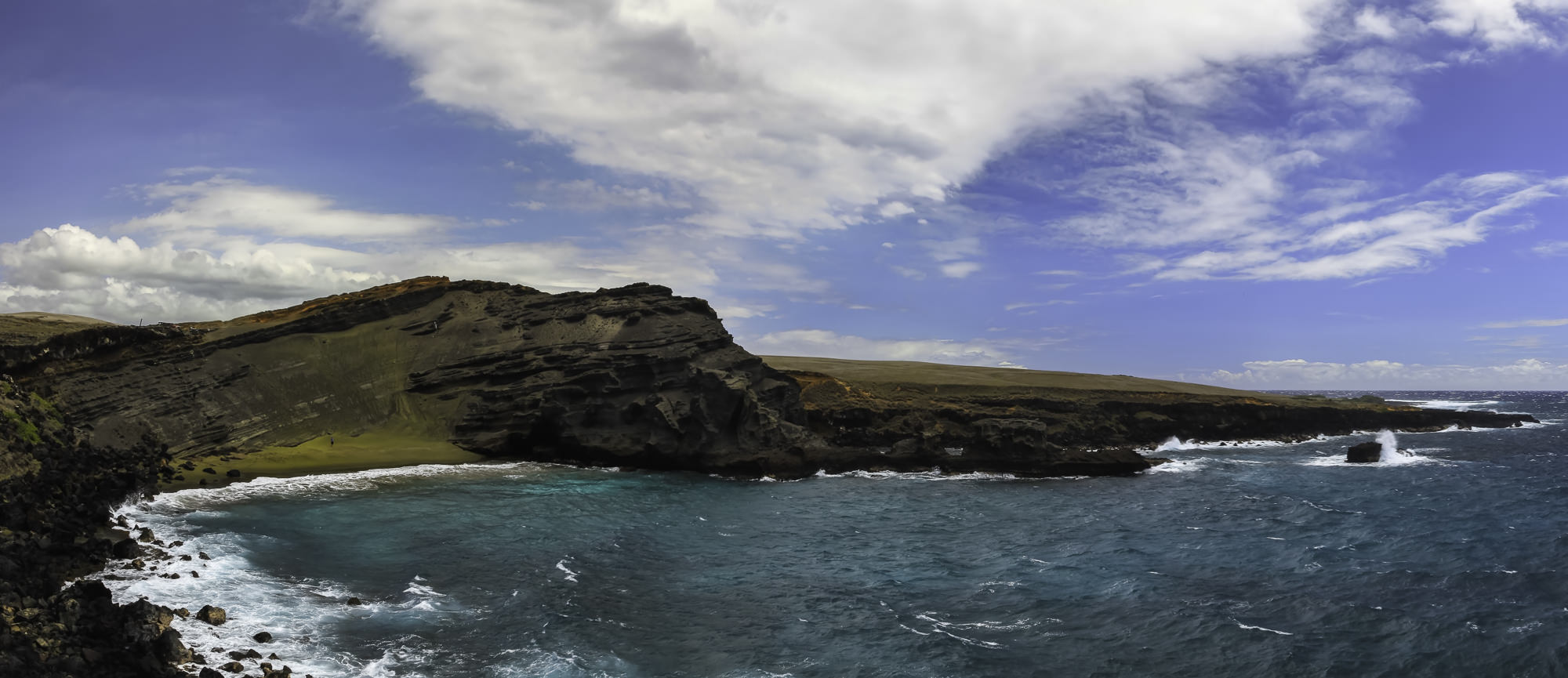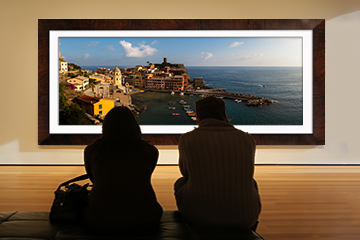
Green sands beach, Papakōlea, Hawaii
green sands beach (Papakōlea Beach)
| location |  | Ka Lae (South Point), Big island, Hawaii, USA Ka Lae |
| gps |  | Ka Lae 18.9136° N, 155.6833° W (beach 18.9389° N, 155.6492° W) |
| access |  | rental car -1.2HRs Hilo - 75 minutes Kona |
| difficulty |  | moderate - 3.2km total hike uneven sandy ground |
| time |  | 3.5Hrs - 2.5 hours hike round trip - 1Hr for photos and/or swim |
Green sands beach (Papakōlea Beach) is located in a small bay half circled by Puʻu Mahana, an ancient cinder cone from ancient Mauna Loa volcano.
 The cinder cone is rich in olivine (a mineral containing iron and magnesium). As the ocean eroded the cinder cone the olivine particles became part of the sand giving Green Sands beach its vibrant green colour.
The cinder cone is rich in olivine (a mineral containing iron and magnesium). As the ocean eroded the cinder cone the olivine particles became part of the sand giving Green Sands beach its vibrant green colour.
South point is typically very windy and it is easy to not notice the intense sun. Wear a hat and bring plenty of sunscreen. The ground is made up of fine sand that can be blown up by the wind. It is best to keep your gear in a case when you are not using it. Close to the ocean the wind also picks up the spray that can combine with the sand to coat you in a fine orange mud.
Along the way there there are beautiful ocean landscapes with contrasting black and orange volcanic rocks. There you can find crosses for the fallen and petroglyphs in the rocks. It is believed that the first Polynesians to arrive in the Hawaiian Islands disembarked here at Ka Lae somewhere between 400 and 800 A.D.
The green sand beach is not large but the sand is soft and the water is wonderful after the long walk. Be cautious if you go in. Mahana Bay is unprotected and waves can be severe. We only go in if the water is very calm as the undertow is fierce even in moderate surf. But we come here for the scenery and the photographs not the swimming.
Although I am not a fan of circular polarizers I found using one here quite useful. The sun gets quite intense even early in the day and without it many shots would be impractical.
current conditions
what to bring
 | sunscreen | don't be fooled by the cool breeze the sun here is intense and without protection you can get severe burns. |
 | water | Bring plenty of water for the walk there, time at the beach and the walk back. |
 | sun hat/visor | Bring a hat for sun protection and swimwear and a towel if you plan to swim in the bay. (great after the walk there) |
 | general purpose/wide | General purpose zoom lens I used 25-105mm (or 24-70mm) and a wide angle (I used 17-35mm) |
 | filters | A circular polarizer is likely needed from mid morning to late afternoon. Graduated filters can be very useful. |
directions
the drive to Kalae
Take the road to ‘South Point’ between mile markers 69 and 70 on Hwy 11. At about 4 miles take the right fork. In another 8 miles, there is another fork. The right will take you to a small harbour with fisherman and the southern most point in the USA. The left fork takes you along a short pothole filled road to the hike parking lot. Here you will find locals with four-wheel drive trucks that shuttle visitors to the green sand beach for a small “gratuity.” If you are not up for the hike, or are on a time restraint, this is an option. (note- this is not strictly legal as there are vehicles are not permitted)
hike to Papakōlea beach
Walk from the parking lot down to the ocean and take the road to the left (facing the water, towards the east). Follow this road, or any parallel paths, with the ocean on your right hand for about 2 1/2 miles and you will get to the cliffs above the green sand beach. As you arrive at the beach the descent looks a bit intimidating especially if you are carrying gear. At the top you will see a trail cut out in the stone which is fairly easy to descend unless when wet as the rocks will be slippery. Also look first to make sure that the waves are not reaching the bottom of the rocks.
the favourite shots
































Share On